Virtual Analytical Science Summit 2022: Poster highlights
Explore the latest research from scientific posters presented at the SelectScience Virtual Analytical Science Summit 2022
23 Feb 2022

This year’s SelectScience® Virtual Analytical Science Summit saw an array of fascinating and insightful scientific posters presenting a range of hot topics in analytical science. Explore our top picks below to gain insights in topics including heavy metals in plant science, analysis of adulterant detection methods, pesticides and sample prep in the food industry, how to speed up laboratory processes with automation, and more!
Physiological responses of basil to lead toxicity
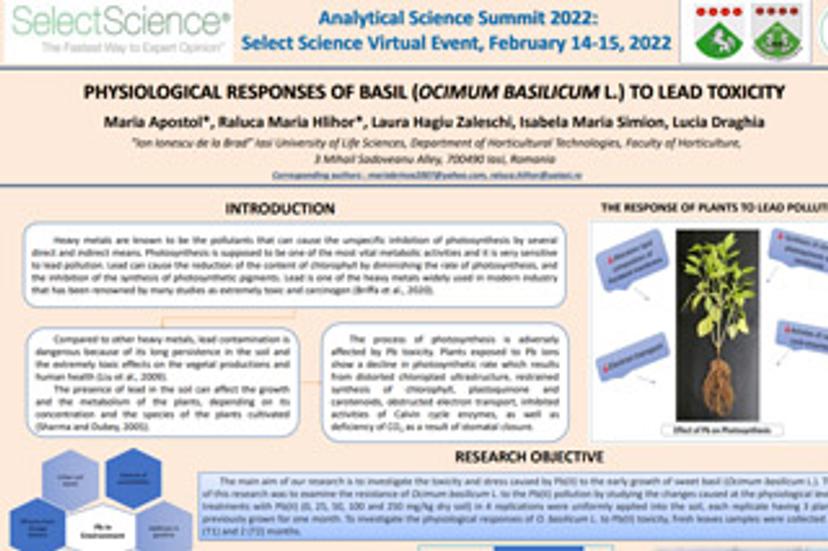
Lead is widely used in modern industry and is extremely toxic and carcinogenic. In plants, lead can cause reduced chlorophyll content by diminishing the rate of photosynthesis, and the inhibition of the synthesis of photosynthetic pigments. This poster presents research aiming to investigate the toxicity and stress caused by Pb(II) to the early growth of sweet basil (Ocimum basilicum L.) by studying the changes caused at the physiological level.
Early-phase of stress evolution caused by cadmium to seedlings of various medicinal plant species
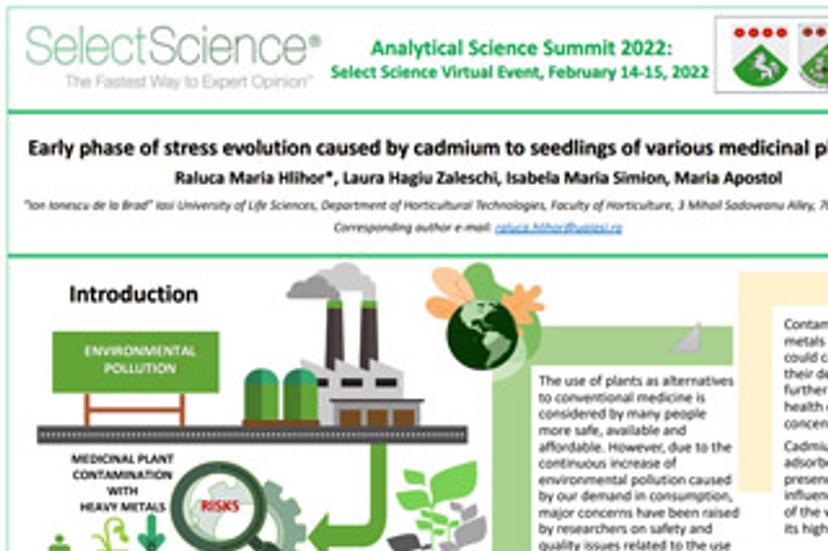
Cadmium can greatly influence the metabolism of a plant due to its high toxicity. This poster describes lab-scale experiments that were conducted to investigate cadmium stress evolution in an early-phase development of three medicinal plants species, widely known for their beneficial effects to human health.
An injectable SERS based plasmonic biosensor to monitor patients with cancer
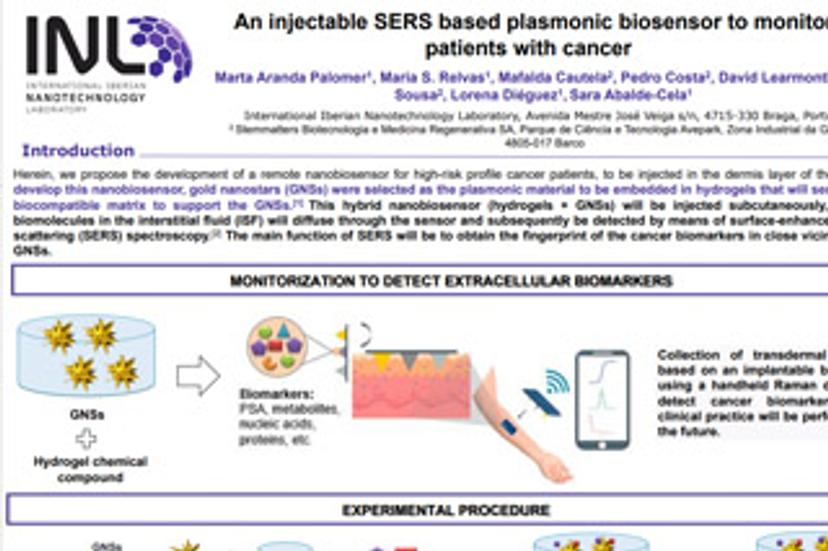
This poster proposes the development of a remote nanobiosensor for high-risk profile cancer patients, to be injected into the dermis layer of the skin. Biomolecules in the interstitial fluid (ISF) will diffuse through the sensor and subsequently be detected by surface-enhanced Raman scattering (SERS) spectroscopy to obtain the fingerprint of the cancer biomarkers.
Morphological and mineralogical characterization of beneficiated Philippine diatomaceous earth
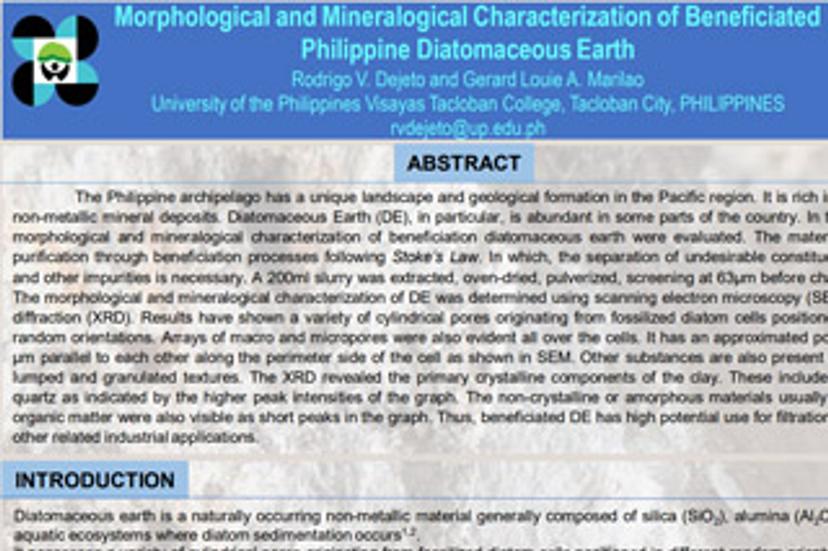
Diatomaceous earth is a naturally occurring non-metallic material generally composed of silica (SiO2), alumina (Al2O3). It possesses a variety of cylindrical pores originating from fossilized diatom cells positioned in different random orientations. In this study, the morphology and mineralogy of beneficiation diatomaceous earth were evaluated.
Analysis of pesticide degradation products in electrolyzed water produced in food purification devices
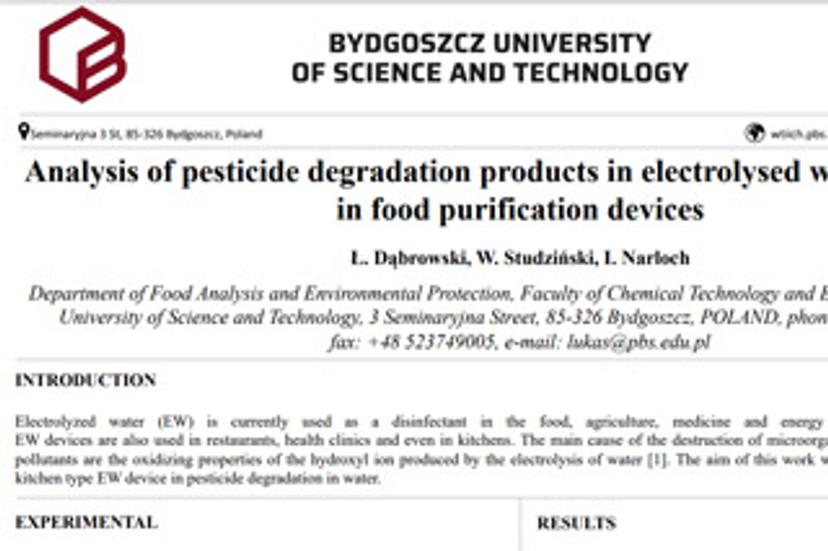
Electrolyzed water (EW) is a widely used disinfectant as the oxidizing properties of the hydroxyl ion produced by the electrolysis of water destroys microorganisms and degrades pollutants. In this poster, Dąbrowski et al. evaluate the efficacy of kitchen type EW devices in pesticide degradation in water.
Improved preparation of lipid products for phytosterols analysis with beta-sitosterol quantitation by GC-FID
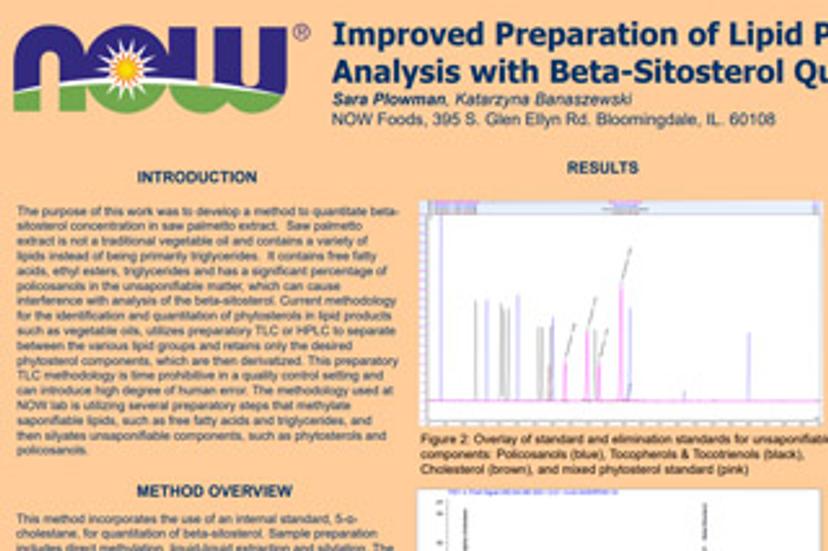
This poster describes the successful development of a method to quantitate beta-sitosterol concentration in saw palmetto extract, a vegetable oil dissimilar to traditional vegetable oils in that it contains a variety of lipids rather than primarily triglycerides. This method utilizes an improved preparation which proves to be repeatable and can be utilized on any lipid product containing trace levels of phytosterols.
Comparison of various signal processing techniques and spectral regions for the direct determination of syrup adulterants in honey
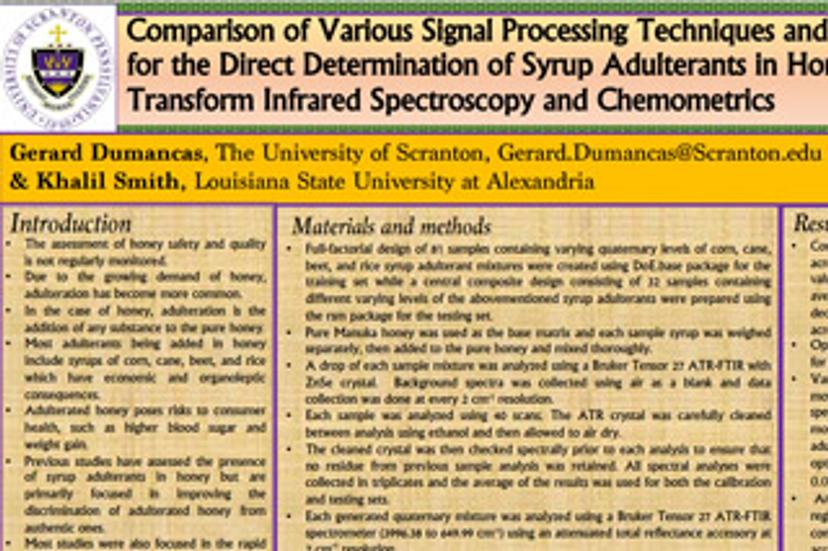
Due to the growing demand for honey, the addition of adulterants to pure honey has become more common. This poster explores the utility of a Fourier transform infrared spectroscopy with attenuated total reflectance accessory (ATR-FTIR), and partial least square regression (PLS) chemometric technique to simultaneously determine the concentrations of corn, cane, beet, and rice syrup adulterants in honey.
Detection of carrier oil adulteration in essential oils by GC-FID
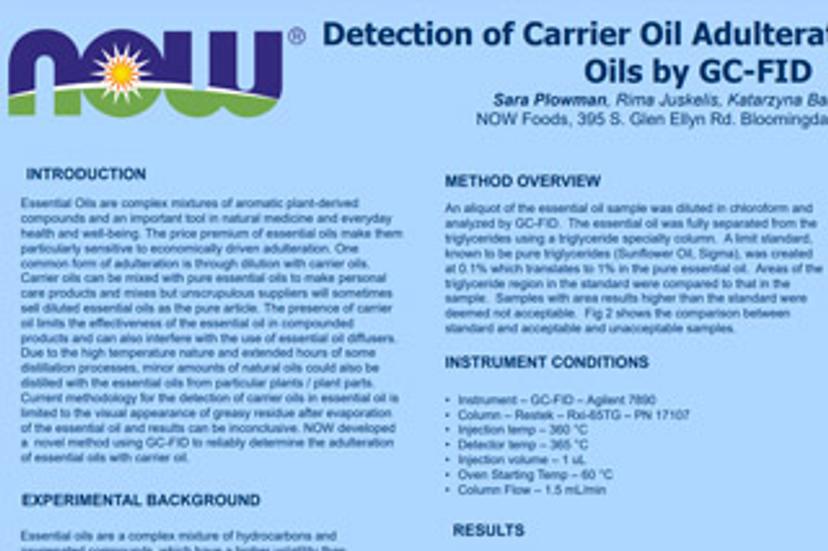
Essential oils are complex mixtures of aromatic plant-derived compounds and an important tool in natural medicine and everyday health and well-being. However, the price premium of essential oils makes them particularly sensitive to economically driven adulteration. This poster describes the development of a repeatable limit method for the detection of carrier oils in essential oils using gas chromatography with flame ionization detection (GC-FID).
Automating the batch-processing of analytical data in drug discovery

This poster provides four different application examples of MGears GUI. This IT tool helps define the desired input, the desired output, and the specific processing steps and tasks that need to happen in between. Once set up, automation workflows can be saved, shared, and run either on demand, on a time schedule, or in real-time mode.
Semi-automated and high-throughput homogenization technique for in-depth analysis of various tissue proteomes
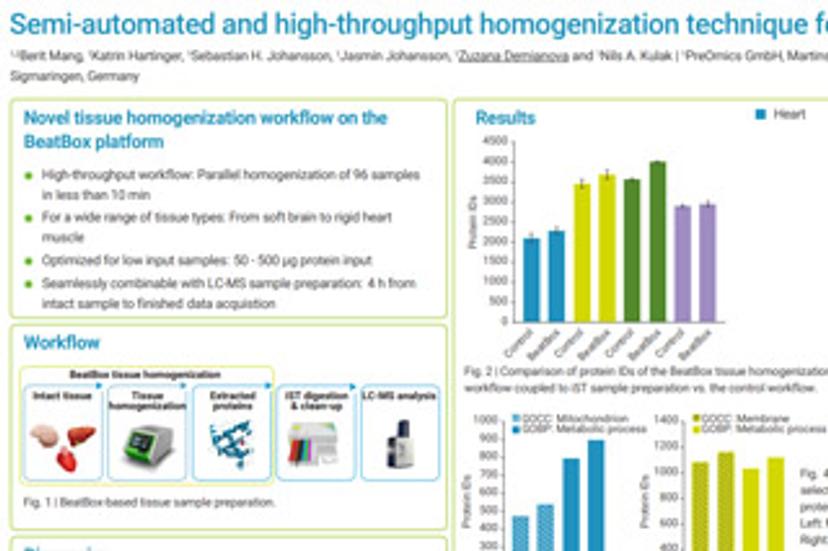
This poster demonstrates the performance of a novel tissue homogenization workflow on the BeatBox platform. The demonstration investigates 1-2 mg wet-weight tissue of mouse lung, mouse brain, mouse liver or mouse heart muscle. The platform promises a high-throughput workflow for a wide range of tissue samples, optimized for low input samples, and easily combinable with LC-MS sample preparation.
